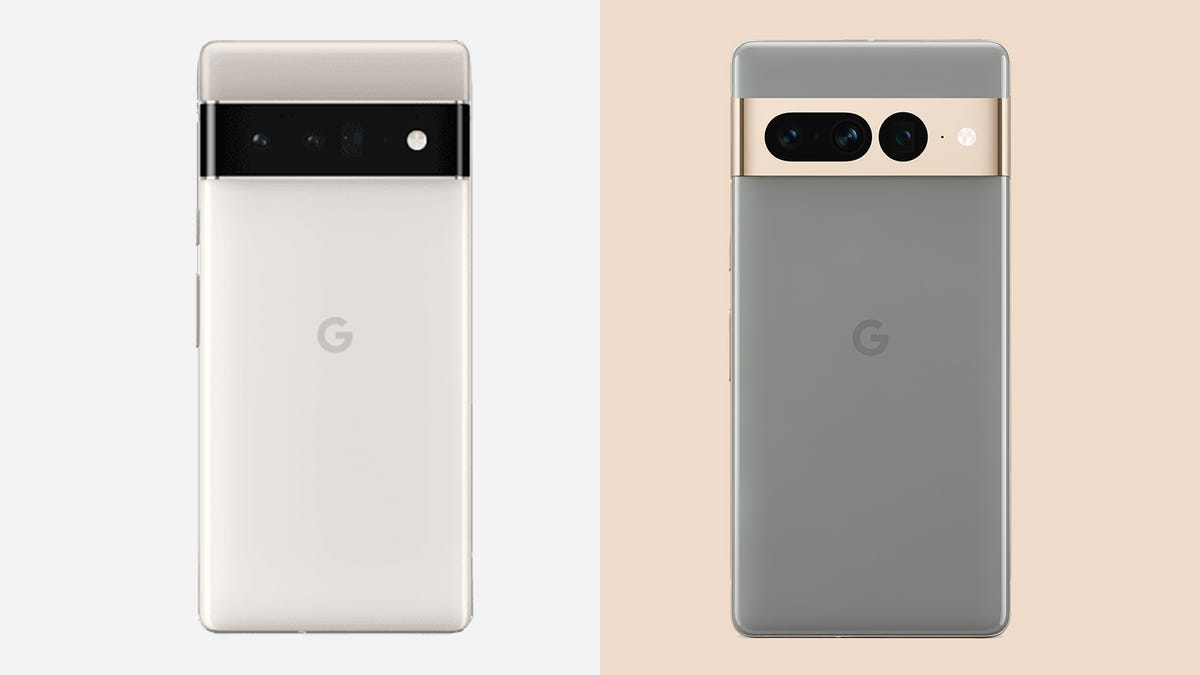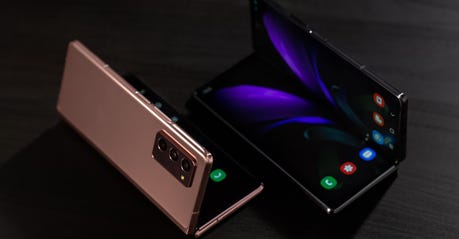'ZDNET Recommends': What exactly does it mean?
ZDNET's recommendations are based on many hours of testing, research, and comparison shopping. We gather data from the best available sources, including vendor and retailer listings as well as other relevant and independent reviews sites. And we pore over customer reviews to find out what matters to real people who already own and use the products and services we’re assessing.
When you click through from our site to a retailer and buy a product or service, we may earn affiliate commissions. This helps support our work, but does not affect what we cover or how, and it does not affect the price you pay. Neither ZDNET nor the author are compensated for these independent reviews. Indeed, we follow strict guidelines that ensure our editorial content is never influenced by advertisers.
ZDNET's editorial team writes on behalf of you, our reader. Our goal is to deliver the most accurate information and the most knowledgeable advice possible in order to help you make smarter buying decisions on tech gear and a wide array of products and services. Our editors thoroughly review and fact-check every article to ensure that our content meets the highest standards. If we have made an error or published misleading information, we will correct or clarify the article. If you see inaccuracies in our content, please report the mistake via this form.
Google Pixel 7 Pro vs Pixel 6 Pro: Which is the best flagship for you?

Google's new Pixel 7 Pro continues the line's tradition of upping its photo and video game with enhanced hardware and new software processing features, while its second-gen Tensor G2 chip makes it the most powerful Pixel yet.
ZDNET Recommends
Some power users will take advantage of every bit of that new power and all of the new features. But, with the Pixel 6 Pro already being such an excellent phone, its discounted pricing might make it a much better fit for the more average user.
Let's take a look at the Pixel 7 Pro and Pixel 6 Pro's specs, and which buyer would be the best fit for each device.
Also: Best Pixel phones
Specifications
Pixel 7 Pro | Pixel 6 Pro | |
Display | 6.7-inch 1440 x 3120 LTPO OLED with 120Hz refresh rate | 6.71-inch 1080 x 2400 AMOLED with120Hz refresh rate |
Weight | 212g | 210g |
Processor | Google Tensor G2 | Google Tensor |
| RAM/Storage | 12GB RAM with 128GB/256GB/512GB storage | 12GB RAM with 128GB/256GB/512GB storage |
| Battery | 5,000mAh with 30W charging | 5,003mAh with 30W charging |
| Camera | 50MP f/1.85 wide, 12MP f/2.2 ultra-wide, 48MP f/3.5 telephoto, 10.8MP f/2.2 front | 50MP f/1.9 wide, 12MP f/2.2 ultra-wide, 48MP f/3.5 telephoto (4x), 11.1MP f/2.2 front |
| Connectivity | 5G (mmWave and sub-6 GHz) | 5G (mmWave and sub-6 GHz) |
Colors | Obsidian, Snow, Hazel | Cloudy White, Sorta Sunny, Stormy Black |
IP rating | IP68 water and dust resistant | IP68 water and dust resistant |
| Price | Starting at $899 | Starting at $625.01 |
You should buy the Google Pixel 7 Pro if...
The Pixel 7 Pro in the Snow colorway.
1. You want all-day (or more) battery life
Google has upped its battery game, not on the hardware front, but from an efficiency standpoint. It claims the device is able to last 24 hours or more thanks to its new Adaptive Battery feature. This tech works in the background optimizing your power by doing things like learning your favorite apps, and automatically preventing apps you don't frequently use from wasting battery life. If a full day isn't enough, the Pixel 7 Pro also now supports Extreme Battery Saver, which can push the lifespan of the smartphone to 72 hours by limiting connectivity and some other features when the need arises. It's not something you'll want to use all the time, but it could be a literal lifesaver in a pinch.
2. You have pro photographer or videographer aspirations
Google's Pixel smartphone line has been at the forefront of smartphone photo and video technology for pretty much its entire existence, and this generation is no exception. Features like enhanced low-light photography, 4K60 video support even for the front-facing selfie camera, and the ability to "unblur" both pictures taken by the Pixel 7 Pro itself and elsewhere all promise to make it one of the best photo and video smartphones ever. Features like Guided Frame even let those with vision impairments take great photos via audio and haptic feedback.
3. Buttery smooth displays are important to you
Not only does the Pixel 7 Pro support a refresh rate of up to 120Hz, but it also includes updated Smooth Display technology that adapts the refresh rate dynamically. This means that you'll still get buttery smooth, fast motion refresh rates when you need it, while dropping to much lower refresh rates to save battery life when the on-screen graphics are still or barely moving.
You should buy the Pixel 6 Pro if...
1. You just want to save some cash
Buying last year's flagship can be a bit of a tricky situation. Sometimes, you get a fantastic phone that can very nearly compete with the following year's edition for between 30% and 50% off. Other times, you may be missing out on features that render the discount you received irrelevant. Thankfully, the Pixel 6 Pro definitely falls into the former camp in our opinion. Aside from the photo and video upgrades and the CPU bump, the Pixel 7 Pro doesn't offer anything truly revolutionary. This means its slightly older sibling, and its discounted price, are probably still the smart option for most average Android users.
2. You're not really that into smartphone photography and videography anyway
Expanding on the first reason above, this one goes out to all those folks (like me) that mostly just take pictures of their dogs, cats, and family members when something cute or memorable is happening. Let's be realistic, smartphone cameras have been far more than up to this task for many years now. The Pixel 6 Pro especially offers earlier, still great iterations of both Real Tone and Night Sight that earned widespread praise when they launched, for good reason. Without any real plans to use the camera enhancements in the Pixel 7 Pro, that discounted Pixel 6 Pro pricing looks a lot more attractive.
3. You're a casual smartphone user who still wants the latest security updates
One of the best things about Google's Pixel line has always been that it is among the first to be updated with new Android features thanks to Google's first-party ownership. While all of the flashy new toys those features often include may be fun to play with, the security features those updates also ship with are what keeps you and your family safe. Thankfully, Google has committed to five years of security updates for all of its Pixel devices. This means you still have about four years of guaranteed security updates left on the Pixel 6 Pro, far more than most similarly-priced, newer devices that originally launched as mid-ranged smartphones are likely to offer you. If you're the kind of person that doesn't upgrade your smartphone often, this is well worth noting.
Review: One year later, the Pixel 6 Pro is still Google's best smartphone
Alternatives to consider
Open to other flagship smartphone prospects? Consider these ZDNET-recommended devices:
Featured reviews
- I put the Apple Watch Ultra through a Tough Mudder: Here's how it held up
- Slow internet at home? This adapter is the key to faster wired connectivity
- iPhone 14 Pro wins with substance over sizzle this year
- AirPods Pro 2 offer two big upgrades but connectivity chaos hasn't been tamed
- Review: The iPhone 14 is exactly as good as it needed to be

